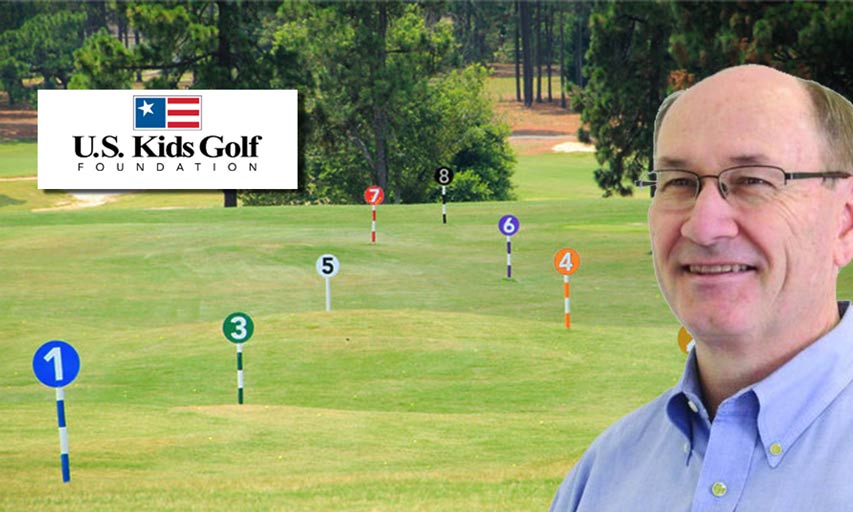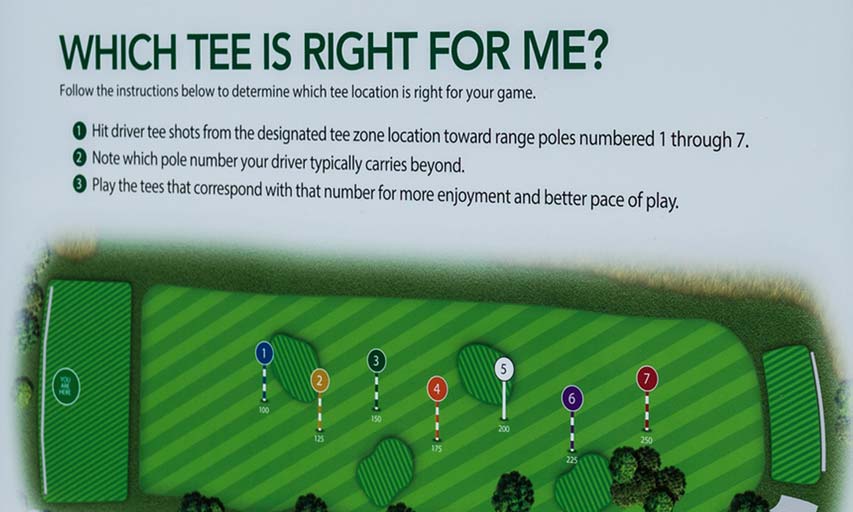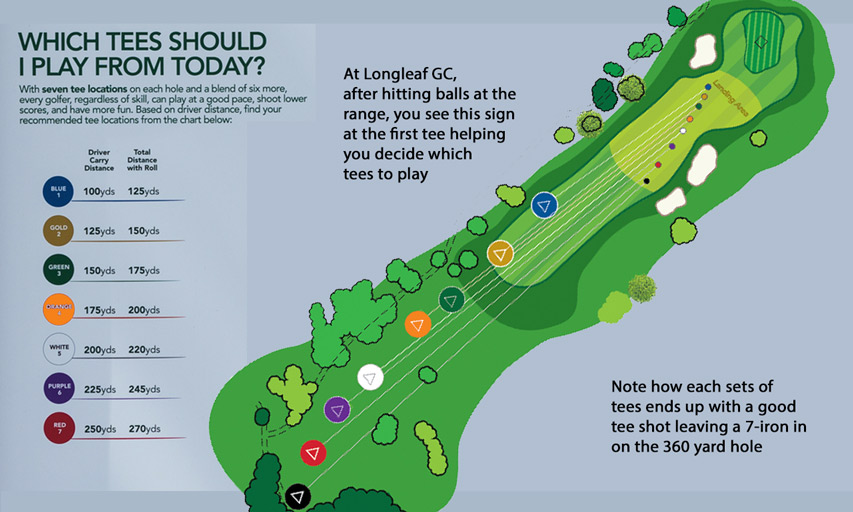By The Numbers: Forward Thinking On the Tee
- Details
- Category: By The Numbers
- Published: 2017-02-01

By Jeff Sutherland - At the upcoming PGA of Alberta Spring Seminar in early March, John Bryan will be talking about how to grow the game in a new way... by truly right sizing the length of hole being played based on ability.
This idea of teeing it forward has been around for a while but Bryan, Vice President of the Coaches Institute run by the company US Kids’ Golf (shown above) will be discussing the hows and why’s based on some hard data.
Developed in conjunction with the American Society of Golf Course Architects, their Longleaf Tee System involves “scaling the course” to make it play exactly the same for players of every skill level in terms of clubs used and number of shots taken to reach the green.
The idea is based on strong evidence that most players’ 7-irons carry approximately 64% of their driver carry distance (a conclusion reached after extensive Trackman research).
For example, say you carry a drive 200 yards... your 7-iron will likely carry 128 yards. Your supple 21-year old son can move the ball 240 yards with the big stick and therefore his 7-iron should fly 154 yards. Your younger daughter who hits her tee shot 100 yards will hit the 7-iron 64 yards.
This basic math has led to some conclusions that blows traditional positioning of tee boxes out of the water. It actually calls for tees that are much more widely separated… with the shorter hitter playing a much shorter golf course.
To explain, let’s look at you and your kids again and assume 10% run for all three of your drives and iron shots.
Your total driver distance would be 220 yards (200 yards carry + 20 yards run). Your son’s would be 264 (240 + 24) and your daughter’s would be 110 (100 + 10).
For a hole to be a legitimate “driver, 7-iron” for you, it should be 360 yards (220 yard total drive + 140 yard total 7-iron). For your son, it should be 420 (240 + 160) and for your daughter 180 (110 + 70).
This would see your son’s tee box a whopping 240 yards behind your daughter’s! This is a far cry from what we see at most courses today where that separation is, at best, designed to see all well-hit drives end up in a similar location.
The system has been put into play at the Longleaf Golf and Family Club which is not coincidentally owned by Dan Van Horn, the founder of U.S. Kids Golf.
Van Horn puts the system's value in direct terms:
“This is no longer theory, it is proven data. We know firsthand through our experience as an owner that scaling our course with seven sets of tees on each hole makes golf more enjoyable for all players and more profitable. The results were immediate and they were profound!”
Their approach starts with a sign at the driving range which asks you to pay attention to how far your drive carries and which colour-coded and numbered sign you reach.

When you reach the first tee you are again reminded about your tee box options.

As noted by Van Horn, there are some interesting outcomes when courses are set up like this.
• The more-forward tees mean that the shorter hitter will use more clubs in their bag. Instead of always being 200+ yards out and hitting that fairway wood again and again, they will be 84 yards from the green and have to decide between a 7-iron or a 6. More decisions, more engagement, more Fun.
• Pace of play is improved. The shorter hitter now does not have to hit three shots to reach the green of a par four. Assuming solid contact, they will be at least be around the green complex in regulation if not on the putting surface.
• There is also an interesting subplot with respect to cross-gender competition. A course set up with tees like this would be much more likely to allow a single set of handicap holes letting men and women compete fairly giving strokes to each other where indicated.
In the table below, you can see how long the holes should be on an nine-hole course with two par-threes, five par-fours and two par-fives that is perfectly set up to allow using every club in your bag.

There is one other stark conclusion from this analysis. The vast majority of players are being forced (or choosing) to play courses that are much too long.
If the ideas of hitting more greens in regulation and being able to use all of the clubs in the bag makes sense, then a woman hitting her drives 150 yards should be playing a golf course that is around 4400 yards.
And the Men? They may be playing too much course as well. Based off a 225 yard carry (longer than the average male's carry distance) and 10% roll, their course should be no more than 6300 yards!
For more information visit:
http://www.uskidsgolf.com/play-and-learn/family-courses/family-course-yardages
http://www.longleafteesystem.com
To see the Longleaf Tee System being discussed on Golf Channel's Morning Drive, click below:
http://www.golfchannel.com/media/longleaf-tee-system-designed-players-all-levels/



